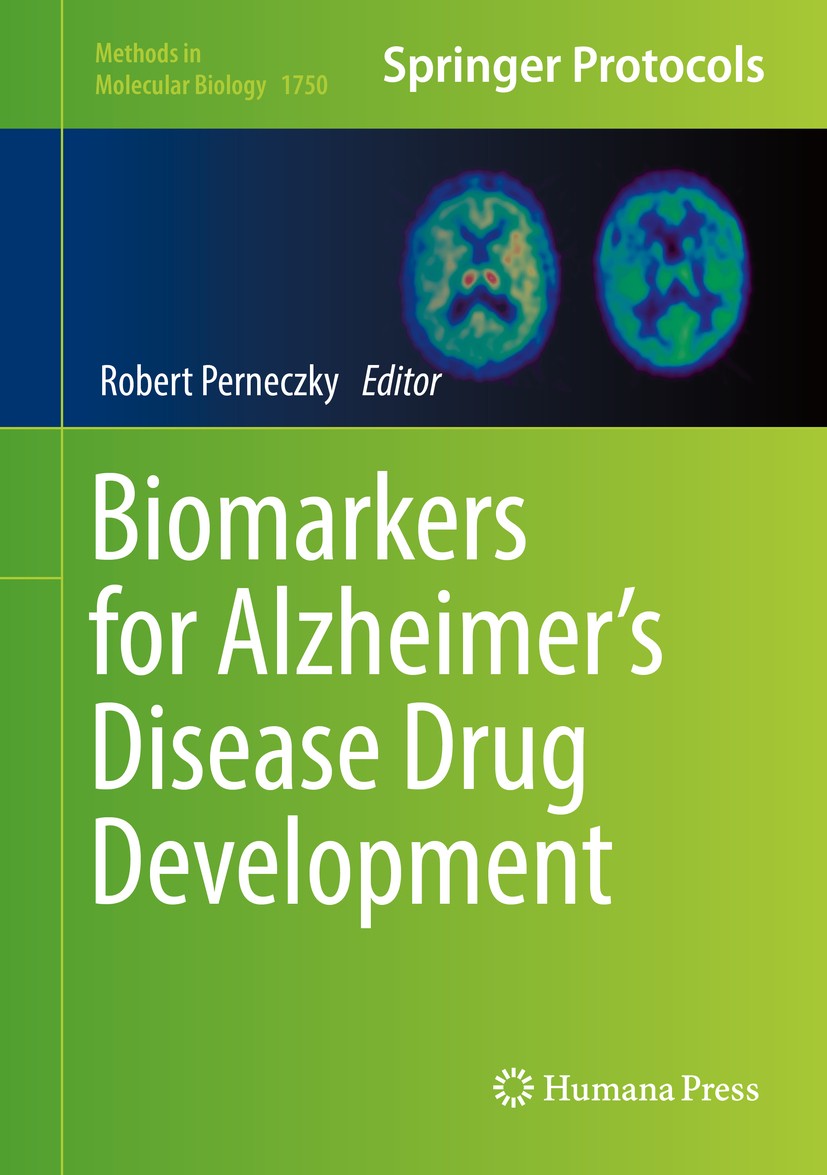| 期刊全称 | Biomarkers for Alzheimer’s Disease Drug Development | | 影响因子2023 | Robert Perneczky | | 视频video | http://file.papertrans.cn/188/187795/187795.mp4 | | 发行地址 | Includes cutting-edge methods and protocols.Provides step-by-step detail essential for reproducible results.Contains key notes and implementation advice from the experts | | 学科分类 | Methods in Molecular Biology | | 图书封面 |  | | 影响因子 | .This volume aims to build a new generation of experts with a broader understanding of key topics in the Alzheimer’s disease field. Chapters guide readers through innovative approaches to the discovery of novel biomarkers in cerebrospinal fluid, innovation in blood-based biomarkers, a comprehensive overview of magnetic resonance imaging and molecular imaging approaches and their value for developing drugs for Alzheimer’s disease, cutting-edge developments in neuropathology and their relevance for Alzheimer’s disease trials, novel genomic strategies for biomarker development, and related topics including neuropsychological testing and advanced analytical methods.Written in the highly successful .Methods in Molecular Biology .series format, chapters include introductions to their respective topics, lists of the necessary materials and reagents, step-by-step, readily reproducible laboratory protocols, and tips on troubleshooting and avoiding known pitfalls... ..Authoritative and cutting-edge, .Biomarkers for Alzheimer‘s Disease Drug Development .aims to ensure successful results in the further study of this vital field. . | | Pindex | Book 2018 |
The information of publication is updating

|
|
 |Archiver|手机版|小黑屋|
派博传思国际
( 京公网安备110108008328)
GMT+8, 2025-11-12 15:52
|Archiver|手机版|小黑屋|
派博传思国际
( 京公网安备110108008328)
GMT+8, 2025-11-12 15:52


